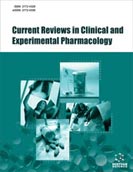Abstract
Background: Biological products comprise the most complex and diverse types of drugs that are made by living cells. The use of biological products has increased significantly in recent decades and has contributed significantly to improving the efficacy of treatment in many diseases. Patent protection for pharmaceutical products, including biological products, generally expires about 20 years after development. Expiration of patents of biological innovative medicines allows regulatory authorities to approve copies of biological medicines, such as medicines called similar biological products (biosimilar) and to enter in clinical use. Biosimilar products are comparable but not identical with innovator biological products and are not a generic version of the innovator biological product. While biosimilars are subjected to rigorous characterization and clinical trials to demonstrate their safety and efficacy, in the case of biosimilars certain regulatory requirements apply for registration. Biosimilars are very complex and large molecules and minor changes in the manufacturing process can have important implications in their safety and efficacy profiles. To ensure that biosimilar reaches their potential in clinical application, intensive Pharmacovigilance system and risk management plan must be established to demonstrate the true similarity between the biosimilar products and original biological products. Biosimilars are part of the growing sector of the pharmaceutical industry and normally used by human beings since manufacturers of biosimilars face some challenges in regulatory approval and manufacturing of biosimilars in the European Union.
Objectives: The current manuscript will provide the information regarding the regulation of biosimilar products with guidelines and challenges faced by manufacturers during approved and manufacturing of biosimilar products in the European Union. This manuscript also provides the status of approved and rejected biosimilars by EMA (European Medicine Agency).
Conclusion: Biosimilars may reduce costs when patent protection of biological products expires and compared to the original products, savings are not as large as seen with traditional generics. In the coming years, there will be an increasing number of biological and biosimilar products available on the market, highlighting the need for specific short and long term post-marketing surveillance programs for these medicines. It is essential to understand how the concept of compatibility, interchangeability will be managed and regulated in the future. An important aspect for future a high quality, clinical and non-clinical studies will be conducted to evaluate the safety and efficacy of biosimilars. Scientific guidelines on biosimilar issued by the EMA (European Medicine Agency) that established a process to demonstrate the similarity between a biosimilar product and the innovator reference product.
Keywords: Regulation, European Union, challenges, regulation, biosimilars, therapeutic.
[http://dx.doi.org/10.1177/1758835918768419] [PMID: 29707043]
[http://dx.doi.org/10.1016/j.phrs.2018.01.024] [PMID: 29428205]
[http://dx.doi.org/10.1177/1078155215603232] [PMID: 26391898]
[http://dx.doi.org/10.1159/000319640] [PMID: 20689318]
[http://dx.doi.org/10.1002/bit.26438] [PMID: 28842986]
[http://dx.doi.org/10.1053/j.seminoncol.2013.09.015] [PMID: 24267944]
[http://dx.doi.org/10.2217/ijr.15.49]
[http://dx.doi.org/10.1016/j.yrtph.2015.12.013] [PMID: 26732800]
[http://dx.doi.org/10.1586/17512433.2015.1071188] [PMID: 26294076]
[http://dx.doi.org/10.1515/prilozi-2016-0006] [PMID: 27442414]
[http://dx.doi.org/10.1016/S1470-2045(14)70365-1] [PMID: 25456378]
[http://dx.doi.org/10.2147/DDDT.S130318] [PMID: 28553082]
[http://dx.doi.org/10.2217/ijr.15.49]
[http://dx.doi.org/10.1007/s40259-013-0020-y] [PMID: 23553340]
[http://dx.doi.org/10.1007/s40259-014-0109-y] [PMID: 25391420]
[http://dx.doi.org/10.1155/2018/3762864] [PMID: 29765782]
[http://dx.doi.org/10.1177/2042098618790442] [PMID: 30283628]
[http://dx.doi.org/10.1002/pds.1948] [PMID: 20583204]
[http://dx.doi.org/10.1007/s40264-013-0121-z] [PMID: 24190573]
[http://dx.doi.org/10.1186/s40880-016-0151-x] [PMID: 27733189]
[http://dx.doi.org/10.1111/bcp.13076] [PMID: 27580073]
[http://dx.doi.org/10.1007/s40273-015-0380-x] [PMID: 26792791]
[http://dx.doi.org/10.1177/1060028017690743] [PMID: 28176529]
[PMID: 23235959]
[http://dx.doi.org/10.3389/fphar.2016.00193] [PMID: 27445826]
[http://dx.doi.org/10.1007/s40274-014-1254-8]
[http://dx.doi.org/10.1002/btpr.2066] [PMID: 25708573]
[http://dx.doi.org/10.1080/19420862.2015.1008346] [PMID: 25621390]
[http://dx.doi.org/10.1053/j.seminoncol.2014.03.008]
[http://dx.doi.org/10.1038/nbt0110-28] [PMID: 20062035]
 25
25 9
9





